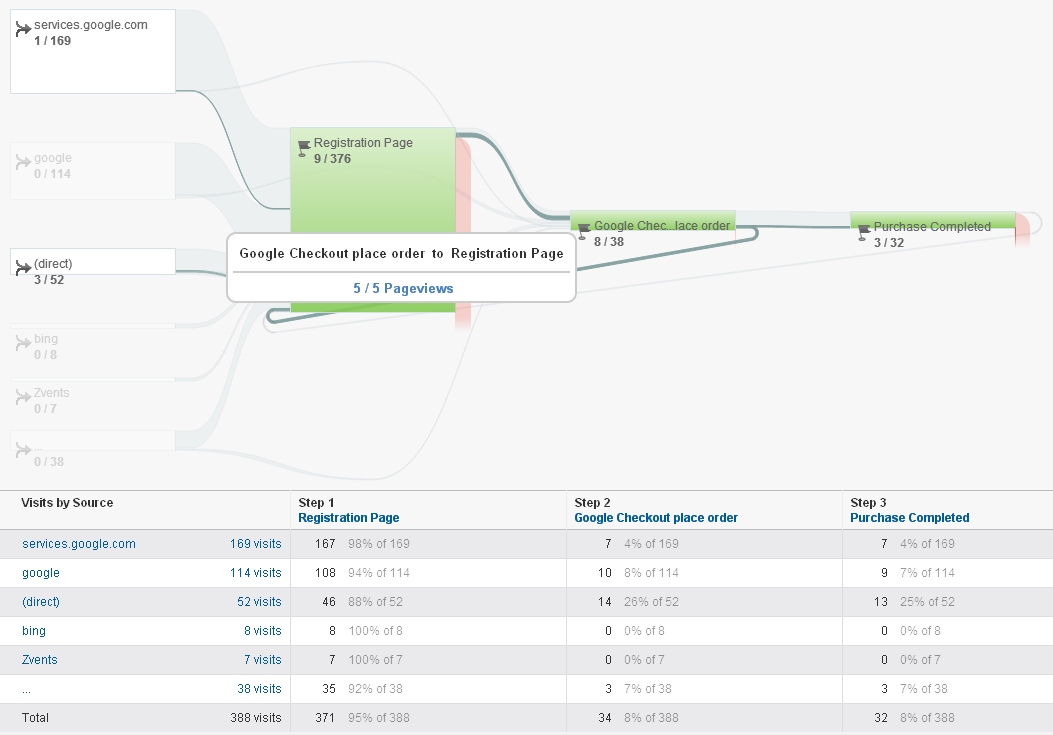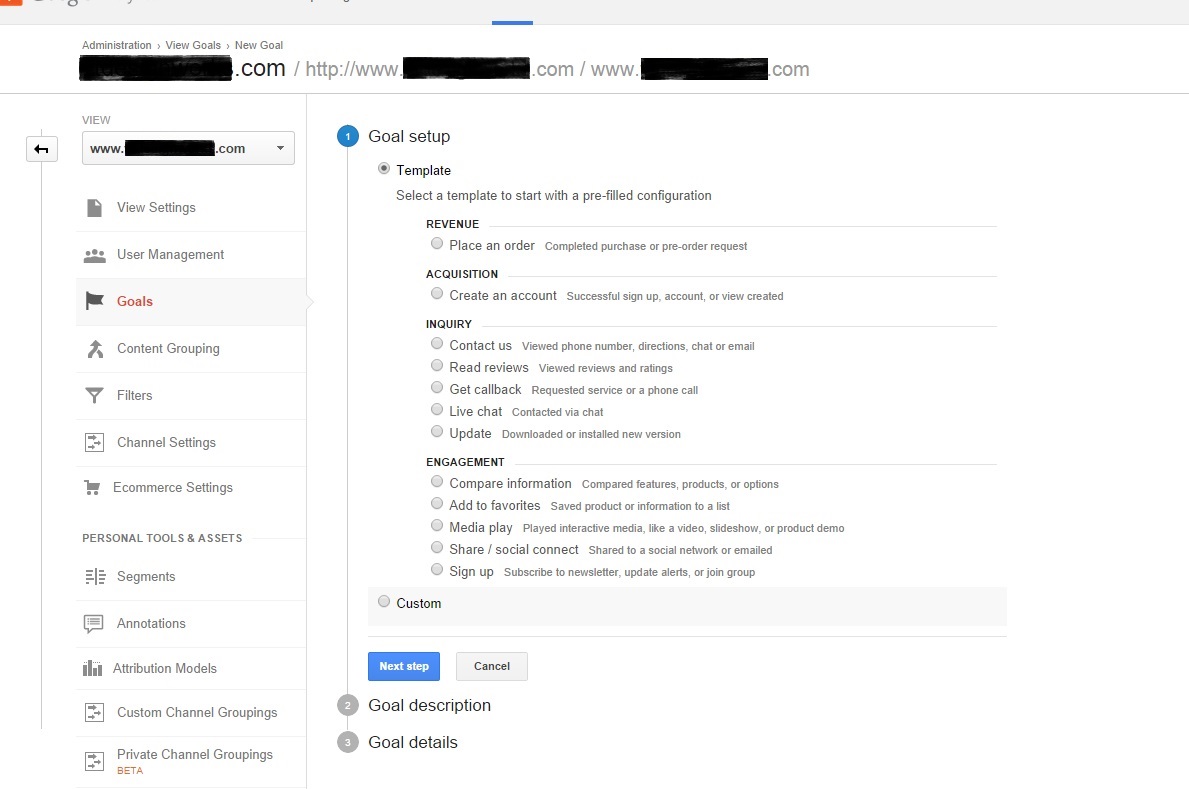Unveiling the Blind Destinations: Recognizing What Google Analytics Goals Can not Gauge
In the world of electronic analytics, Google Analytics stands as an effective device for monitoring and evaluating on the internet individual interactions. Amid its robust abilities, there exist blind spots that typically escape dimension. what data is google analytics goals unable to track. Recognizing what Google Analytics goals can not measure is crucial for gaining a comprehensive sight of customer habits and interaction. As we delve into the details of these dead spots, we uncover a complex internet of uncharted territories that hold valuable understandings into user activities and inspirations, difficult traditional wisdom and losing light on the restrictions of our data-driven understanding.
Individual Behavior on External Operatings Systems
Comprehending how customers engage on external systems is important for enhancing on the internet techniques. Exterior systems, such as social networks networks, referral internet sites, and on the internet forums, play a substantial function in driving web traffic to a firm's web site. By assessing user habits on these systems, services can gain useful understandings into the performance of their marketing efforts and the choices of their target audience.
One trick aspect of individual actions on external platforms is the reference resource. By tracking where the users are originating from, organizations can determine which systems are driving one of the most traffic to their website. This info can assist companies assign their sources much more effectively, concentrating on the systems that yield the very best outcomes.

Offline Interactions and conversions
Evaluating individual habits on outside platforms offers useful understandings into on the internet methods; however, taking into consideration offline conversions and communications is just as vital for a comprehensive understanding of a company's total efficiency. While Google Analytics stands out at tracking on-line interactions, it drops short in capturing the full consumer journey that usually includes offline touchpoints. Offline conversions, such as in-store purchases or phone queries, play a considerable role in several organizations' success. Neglecting these interactions can result in a distorted sight of the performance of advertising campaigns and overall company performance.

Attribution Beyond Last Click
When diving into the world of electronic marketing analytics, it ends up being necessary to look past the single touchpoint of the last click for a more thorough understanding of attribution. While Google Analytics gives valuable why not try these out insights into user actions, depending solely on last-click acknowledgment can be limiting - what data is google analytics goals unable to track. Attribution designs that go beyond the last click offer a more nuanced sight of the client trip, taking into account all the touchpoints that bring about a conversion
Acknowledgment beyond the last click allows online marketers to appoint credit to various interactions along the conversion path, offering a more clear image of the effectiveness of various advertising channels. By discovering multi-touch acknowledgment models such as linear, time decay, or position-based acknowledgment, businesses can much better allocate their advertising and marketing budget plans and enhance their methods for maximum impact.
Recognizing the influence of each touchpoint in the conversion procedure is vital for making informed decisions and making the most of ROI. By embracing acknowledgment past the last click, companies can gain much deeper understandings into consumer habits and customize their advertising efforts extra successfully.
Cross-Device and Cross-Browser Tracking

In a similar way, cross-browser tracking matches cross-device tracking by recording user habits as they change between different internet browsers. Recognizing exactly how customers connect with internet sites on different here internet browsers can aid marketing professionals optimize their on-line experiences to guarantee uniformity and performance across various platforms.
Qualitative Information and Individual Intent
Recognizing customer intent through qualitative information evaluation is essential for creating targeted digital advertising methods that resonate with the requirements and preferences of the target market. Qualitative data gives insights right into the 'why' behind individual actions, losing light on inspirations, emotions, and choices that quantitative data alone can not catch. By assessing customer responses, comments, and interactions, marketers can reveal useful details regarding customer intent, allowing them to tailor their messaging, material, and offerings to better straighten with what their target market is looking for.
Qualitative information likewise assists in comprehending the context in which users engage with a website or application. This contextual understanding makes it possible for online marketers to develop more appropriate and tailored experiences, inevitably driving higher involvement and conversion rates. By diving right into individual intent through qualitative information evaluation, businesses can acquire a much deeper understanding of their target audience, causing extra reliable marketing approaches that satisfy customers' needs and expectations.
Conclusion
Finally, Google Analytics objectives have constraints in determining user habits on external systems, offline conversions, acknowledgment beyond last click, cross-browser and cross-device tracking, and qualitative data associated with individual intent. what data is google analytics goals unable to track. It is important for services to be familiar with these blind areas in order to supplement their information analysis with other devices and methods to obtain a much more comprehensive understanding of their audience and improve their general digital advertising and marketing techniques
By examining customer habits on these systems, companies can obtain useful understandings into the effectiveness of their advertising efforts and the preferences of their target audience.
Assessing user actions on outside systems offers beneficial understandings right into on-line methods; however, considering offline conversions and communications is just as imperative for an extensive understanding of a business's total efficiency.In digital advertising analytics, moving beyond last-click acknowledgment to explore cross-device and cross-browser tracking is necessary for acquiring a holistic understanding of user interactions across numerous systems and gadgets. By assessing customer feedback, remarks, and communications, online Read More Here marketers can uncover important information concerning customer intent, enabling them to tailor their messaging, content, and offerings to much better straighten with what their target market is seeking.
By delving right into customer intent via qualitative data analysis, businesses can obtain a much deeper understanding of their target audience, leading to a lot more effective marketing strategies that fulfill customers' assumptions and requirements.